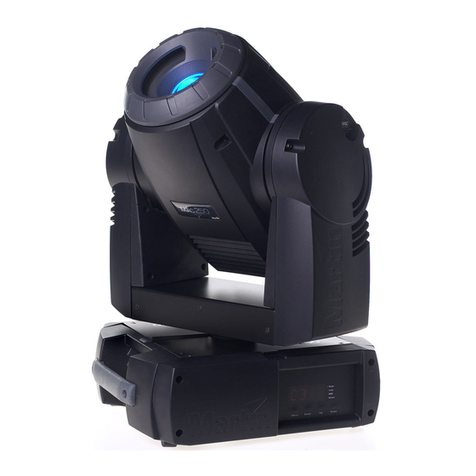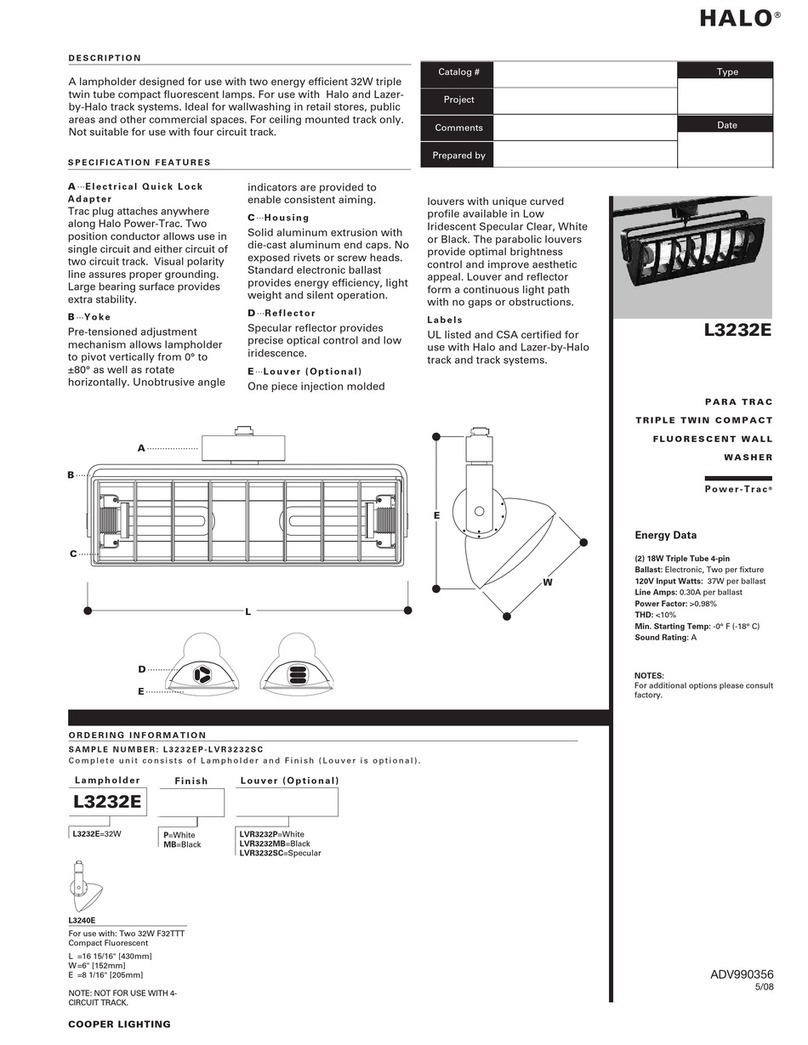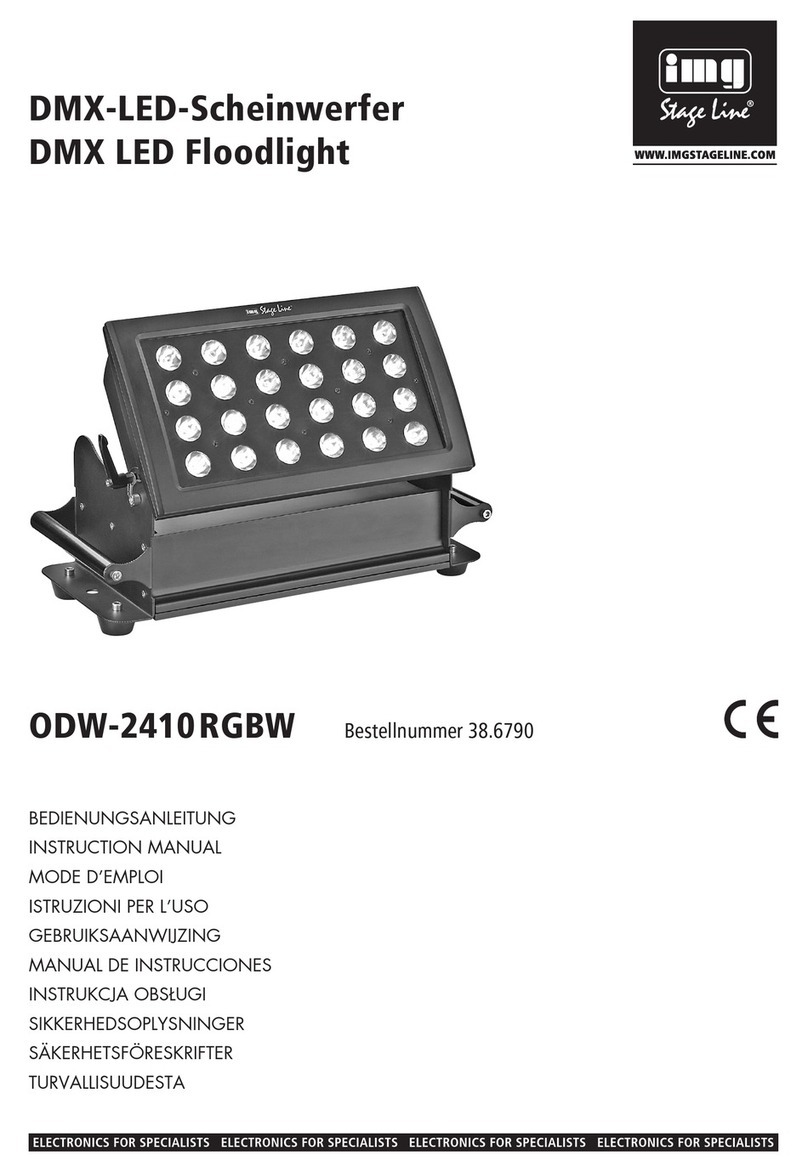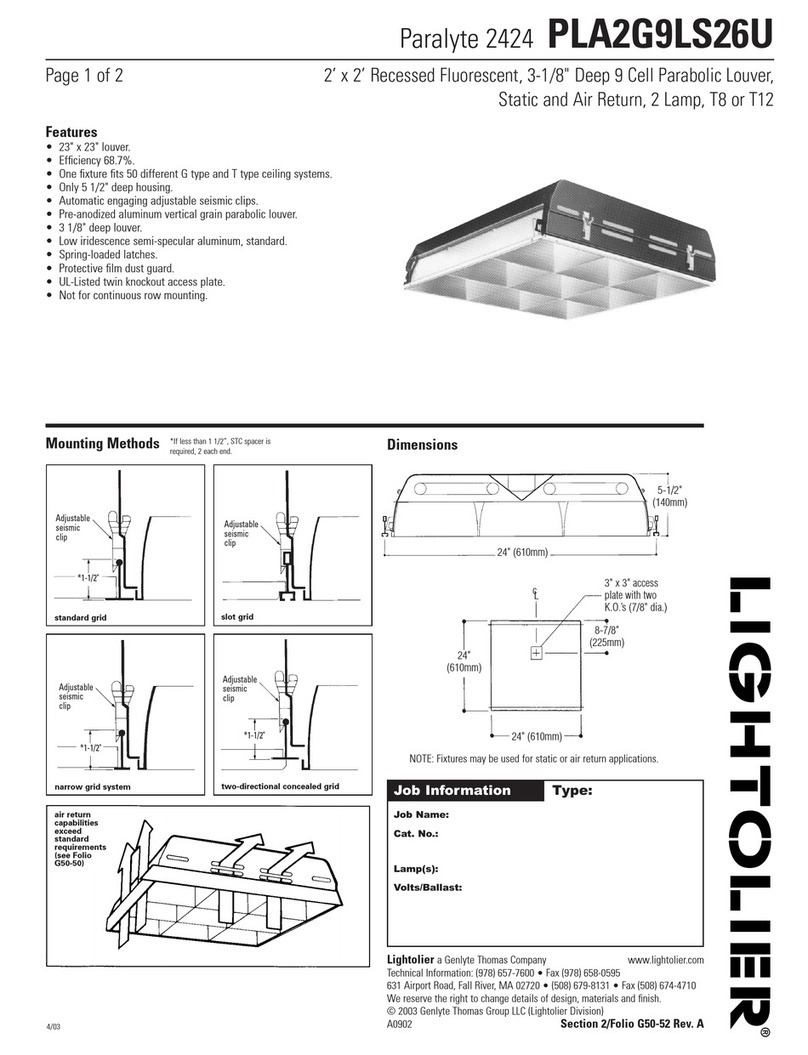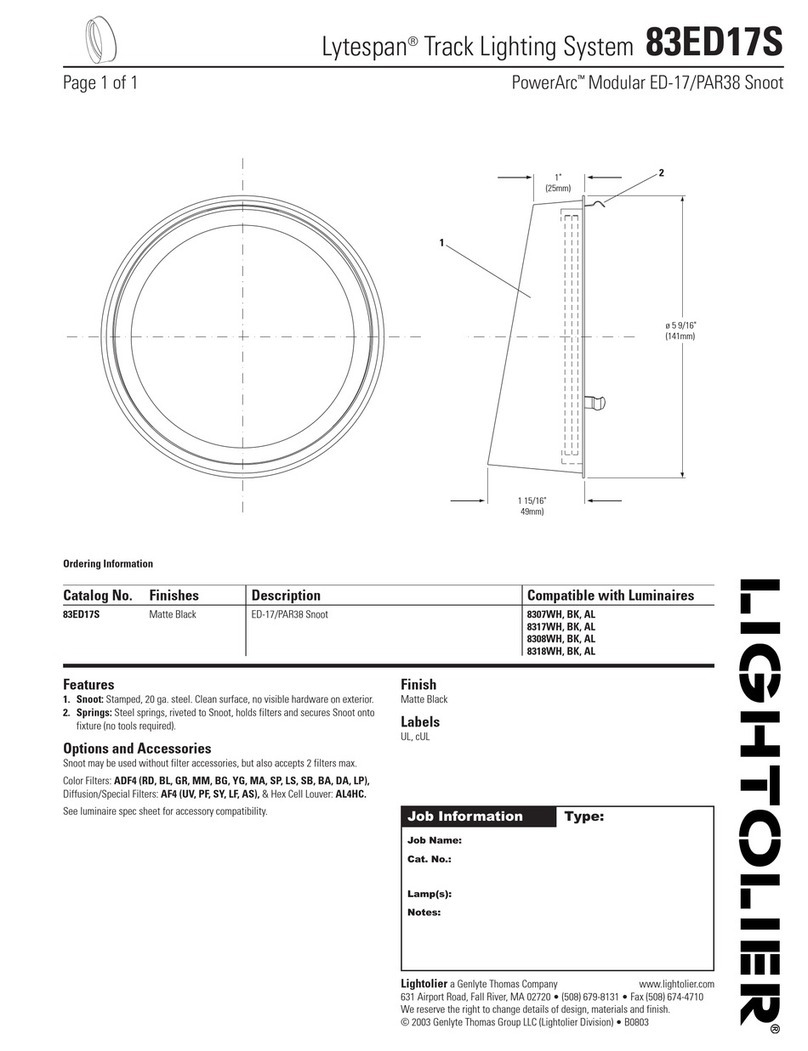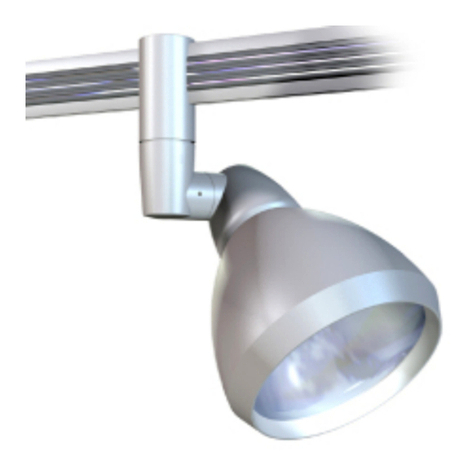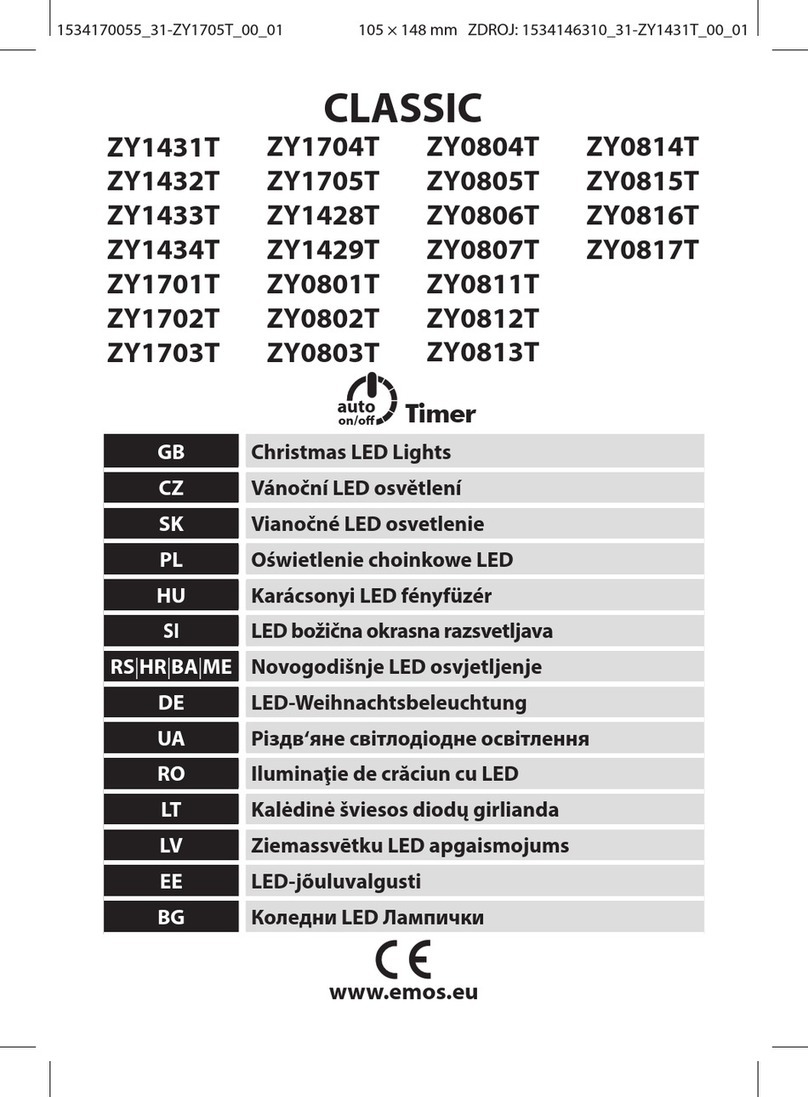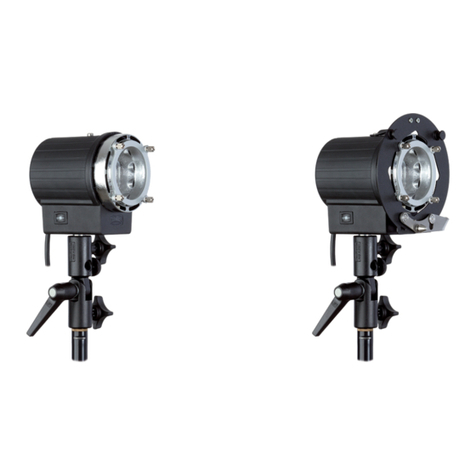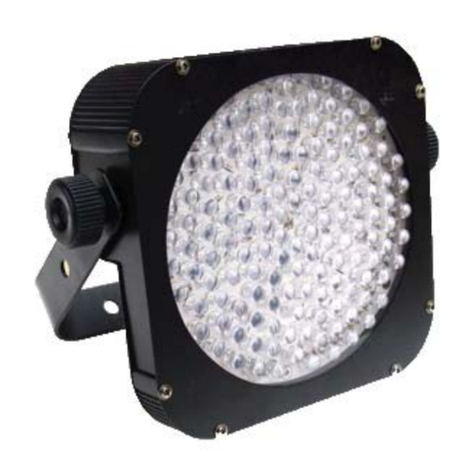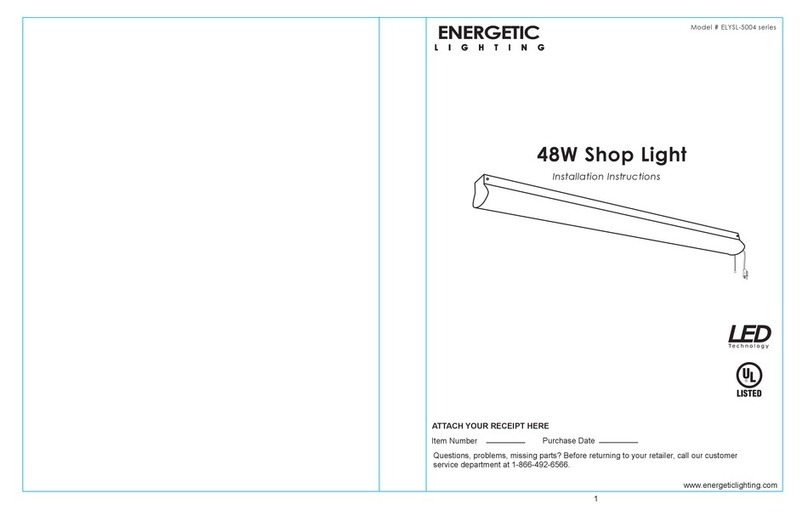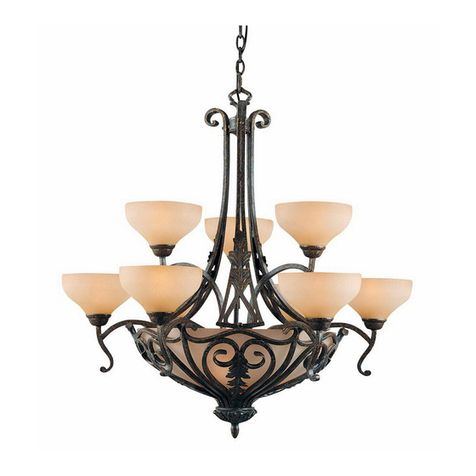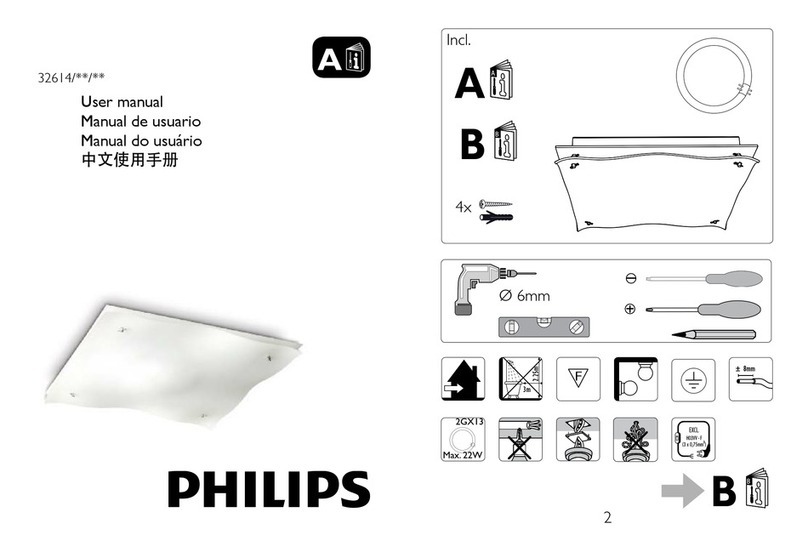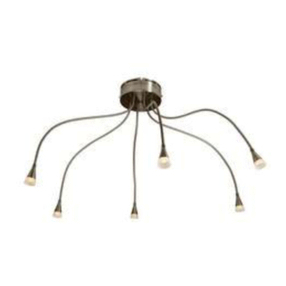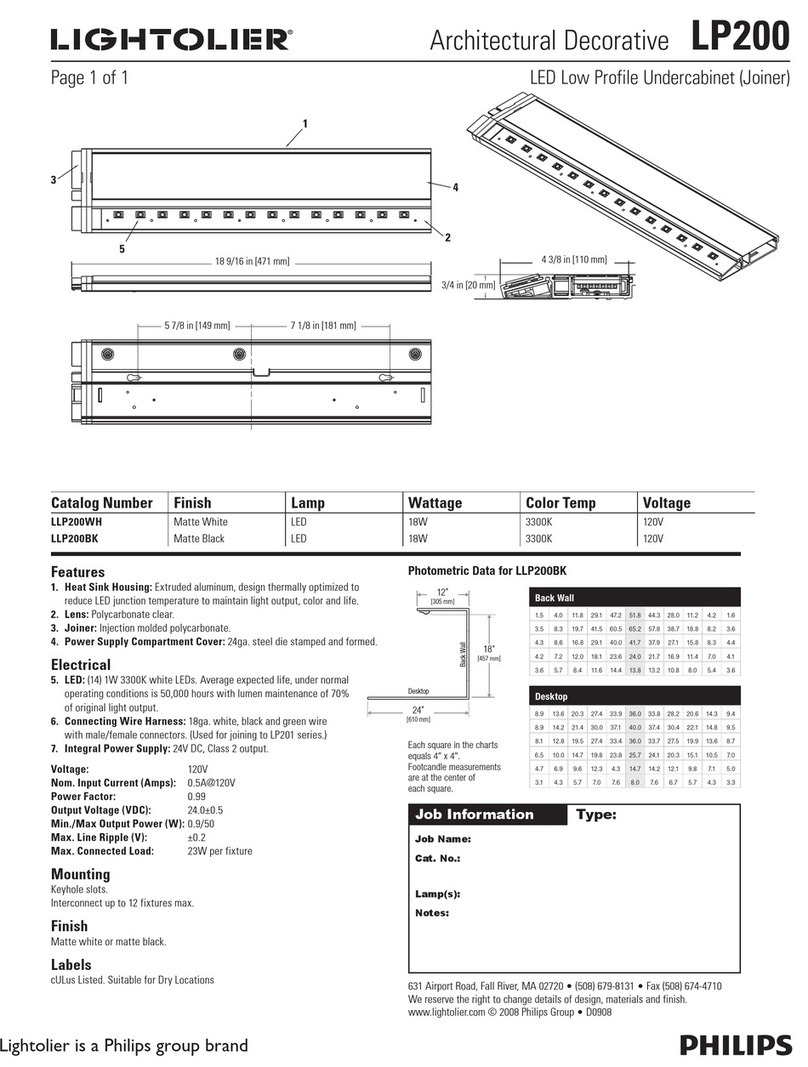página 4 PRUEBA y MANTENIMIENTO
NOTA: Los sistemas de iluminación de emergencia deben ser
probados de acuerdo con la norma NFPA 101 o con la
regularidad que exijan los códigos locales, para verificar que
todos los componentes sean operativos.
NOTA: Deje que las baterías se carguen por 24 horas antes de la
prueba inicial.
Prueba manual:
Si las baterías tienen carga suficiente, presione y suelte el botón
“TEST”, o use el RTKIT (accesorio de prueba remota, hasta 40 pies
de distancia solo para unidades SDRT) en la parte inferior de la
unidad para activar una prueba de 30 segundos durante la cual las
lámparas se encenderán. Después terminar la primera prueba de 30
segundos, se puede cancelar una prueba en curso en cualquier
momento al pulsar y soltar el botón "TEST" de nuevo.
Autodiagnóstico (característica SDRT)
Las unidades con esta opción realizan automáticamente una prueba
de autodiagnóstico de 5 minutos en los dispositivos electrónicos de
carga, la batería y las lámparas cada 30 días, y una prueba de 90
minutos al año, la cual indica el estado del sistema como se muestra
en la tabla de la derecha. La primera autoevaluación se produce
después de 15 días de alimentación de CA continua.
Postergación de una autoevaluación:
Si una autoevaluación automática se produce en un momento en que no
es conveniente que las lámparas de la unidad estén encendidas, se
puede postergar la operación durante 8 horas al presionar o soltar el
botón “TEST”, o al usar la RTKIT (accesorio de prueba remota, hasta 40
pies de distancia).
Operación de cancelación de emergencia:
Mantenga presionado el botón “TEST” por varios segundos o
desactive utilizando RTKIT (accesorio de prueba remota, hasta 40
pies de distancia), durante los cuales el indicador de estado será
intermitente hasta que las luces se apaguen. Esto restaura el estado
de restablecimiento CA en el que se envía la unidad.
Función de aprendizaje de carga:
Las unidades de autodiagnóstico “aprenden” automáticamente su carga
total de la lámpara conectada durante la primera autoevaluación
programada (aproximadamente 15 días). La función de aprendizaje de
carga también puede iniciarse manualmente al mantener presionado el
botón “TEST” por 7 segundos (contar las intermitencias), durante los
cuales las lámparas se encenderán. Después de 7 segundos, suelte el
botón; las lámparas se apagarán en 2 segundos, lo que indica que se
completó el aprendizaje de carga. Si las lámparas permanecen
encendidas durante más tiempo, significa que el aprendizaje de carga no
pudo completarse. Esta característica de aprendizaje de carga manual
debe iniciarse siempre que la unidad de la lámpara conectada esté
totalmente cargada o que una lámpara sea reemplazada.
NOTA: Las funciones de aprendizaje de carga manuales no pueden
iniciarse si las baterías no tienen carga suficiente. Si esto es así,
espere hasta que la unidad indique que la batería ha sido totalmente
cargada (indicador de estado verde fijo) antes de iniciar la función de
aprendizaje de carga manual.
Aclaración de indicaciones de falla:
Después de corregir un error y luego de que se restablezca la
alimentación de la unidad, desactive la indicación de error
presionando el botón "TEST" una vez o utilizando RTKIT (accesorio
de prueba remota, hasta 40 pies de distancia).
Tiempo de retraso (opción TD):
Con la opción TD, las luces permanecerán encendidas durante 20
minutos después de que se restaure la alimentación de CA para la
unidad en el modo de emergencia o hasta que las baterías alcancen el
nivel de desconexión por bajo voltaje. La operación Tiempo de retraso
puede ser cancelada en cualquier momento durante este período de 20
minutos al presionar el interruptor de prueba una vez.
Indicaciones sobre el estado de la unidad
El botón "TEST” se ilumina para indicar las siguientes condiciones:
INFORMACIÓN IMPORTANTE SOBRE LAS BATERÍAS:
Las baterías sonproductos perecederos. Para obtenermejores
resultados, se recomienda que las baterías reciban una carga inicial
dentro de los primeros seis meses posteriores a la fecha de fabricación
del aparato. La fecha de fabricación se encuentra en el exterior del
empaque de la unidad y en la etiqueta del producto, como lo establece
el código de fecha/número de serie. Los dos primeros dígitos del
código de fecha representan el año y los segundos dos dígitos
representan el mes.En muchos casos,las baterías, más allá del marco
de tiempo recomendado para la carga inicial, se recuperarán
completamente si son cargadas después de la instalación. Si este tipo
de baterías no se recupera después de una carga inicial completa,
estas deben ser reemplazadas.
Botón “TEST”
Indicación:

